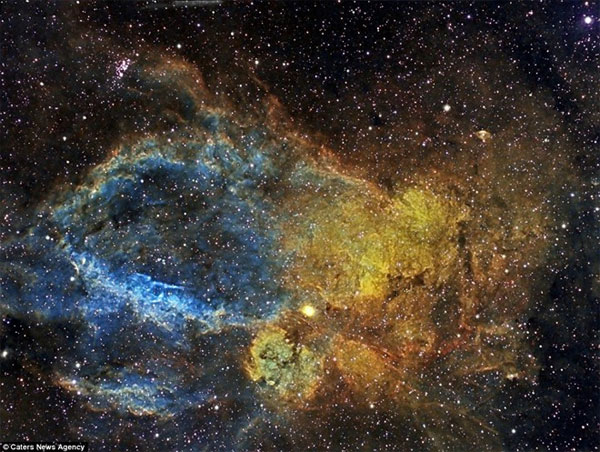Spectacular supernova explosions in the universe
A sudden new star exploded in the universe, the brightness skyrocketed billions of times and then descended in a few weeks or months.

Eric Coles, an amateur supernova hunter in Illinois, USA accidentally captured beautiful images of a blazing star explosion outside the globe.

The stellar explosion creates very bright objects, mainly plasma, that flare up for a short time.The brightness suddenly increased by billions of times then gradually decreased in a few weeks or months.

The 70-year-old astronomer had to use up to five different light filters to accurately see the shape of the gas masses absorbing the energy of nearby stars.

"The hydrogen, oxygen, sulfur gases that exist in the nebula will draw energy from the surrounding stars and emit light at different wavelengths,"Coles explained.

Two types of planetary starbursts often occur in the universe.The first type usually occurs in a binary star system (two stars have the same orbit passing through a point).A white dwarf draws material from a star flying around it until it reaches its maximum mass and fires.

The second type occurs when a star prepares to end the life process.It burns out fusion fuel, loses light pressure, and collapses into the center under its own gravity.High density and pressure cause an explosion.

The star suddenly flares up as if it was just born.The total energy released can be up to 1044J.

These findings are important and will help scientists understand more about the universe.When stars explode, they will leave debris and become supernova remnants.These materials can form new stars, planets or other mysterious things.
- Why the dead body
- The supernova explosion can destroy Earth from 50 light years
- Strange rays from the cosmos excite the ancient people with two legs
- Universe photo: Beautiful butterfly wings in the universe
- Supernova explosions shoot super-fast stars across the galaxy
- Modifications of supernova type 1a
- The solar system fits in 'bubble'
- Create supernova explosions in the laboratory
- The supernova explosion is 10.5 billion light-years away from Earth
- Supernova implants a seed for the universe
- Primary school girls discover explosions of superstars
- NuSTAR telescope helps decode supernova explosions
 The 11 most unique public toilets in the world
The 11 most unique public toilets in the world Explore the ghost town in Namibia
Explore the ghost town in Namibia Rare historical moments are 'colored', giving us a clearer view of the past
Rare historical moments are 'colored', giving us a clearer view of the past The world famous ghost ship
The world famous ghost ship